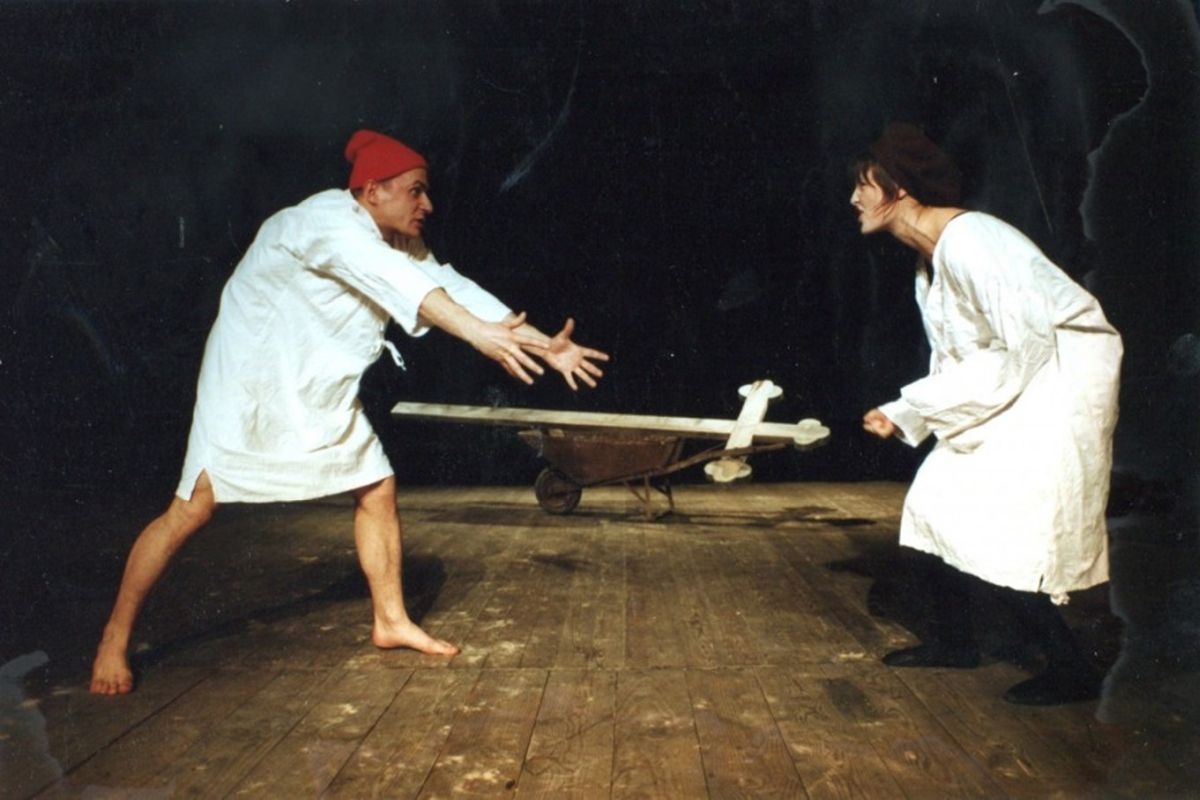Burial
Państwowa Wyższa Szkoła Teatralna im. L. Solskiego, Kraków

(...) The script consists of two acts. The first part shows the life and work of Stanisław Ignacy Witkiewicz from the perspective of the day of his death, September 18, 1939. The day chosen by him was not accidental. He committed suicide the day after the Soviet army entered Poland. it is certain - memories came back, experiences related to his escape from Russia overwhelmed by the Bolshevik revolution - personal experiences. His assumptions were starting to prove to be true. The first part of the performance tells, through the figure of Witkacy, about the essence of creation and all creativity. Jerzy Jarocki evokes the Faust motif here. The forces of Good and Evil take up the fight for the soul of the artist shown in the performance. The second part is a dialogue of the dead, a conversation between Witkacy and the women he loves, a conversation with the living, with actors, with the audience, because as a deceased he has the opportunity to look at his life objectively. The place of these meetings of the deceased Witkacy is the cemetery. This place is puzzling. It is not only the Zakopane cemetery where the alleged remains of Witkacy were buried in 1988, despite the doubts that were already arising at that time. It is also the Montmartre cemetery in Paris, where in 1972 Juliusz Słowacki's remains were excavated to be transported to Poland, as well as the parish church in Zwoleń - the burial place of Jan Kochanowski, perhaps more precisely, the remains attributed to him. The history of Poland in the last over seventy-five years is shown through the figure of Witkacy. Therefore, the performance tells about the present day, and may it not be a prediction of the times to come. This is only the partially sketched metaphor: Burying, materialized in Jerzy Jarocki's production. Maciej Fugas
Event Properties
| Event Date | 11-06-1995 | 0:00 |
| Capacity | Unlimited |
| Registered | 0 |
| Individual Price | Free |
| Location | Large Stage |
|
Scenario and direction
Scenariusz i reżyseria
Jerzy Jarocki
|
|
Scenography
Scenografia
Jerzy Kuk - Kowarski
|
|
Music
Muzyka
Stanisław Radwan
|
|
Stage movement
Ruch sceniczny
Agnieszka Łaska
|
|
Director's assistants
Asystenci reżysera
Maciej Fugas, Anna Bas
|
|
Set designer's assistant
Asystent scenografa
Tomasz Polasiuk
|
Monika Jakowczuk
Erynia I, Babcia, Kmiotek, Matka, "Czarna" - duch cmentarny
Katarzyna Krzanowska
Erynia III, Anioł II, Czesia
Robert Latusek
Grabarz Stary, Diabeł, Sajetan
Zuzanna Lipiec
Helenka, Dziewka Bosa
Wojciech Łuczak
Widmo Ojca, Hiper - Robociarz, Brat I, Pełnomocnik
Bartosz Niebielski
Grabarz Młody, Diabeł, Czeladnik
Dariusz Szymaniak
Stanisław Ignacy, Kmiotek, Brat II, Urzędnik, Profesor
Katarzyna Tlałka
Erynia II, Anioł I, Nina, Księżna
Paweł Tołwiński
Baltazar - Belzebub, Czeladnik II, Mitras, "Czarny" - duch cmentarny
Marek Wrona
Diabeł, Witkacy
Małgorzata Gałkowska
Hilda, Solska



